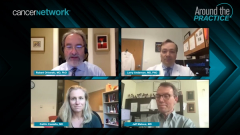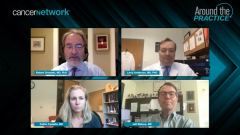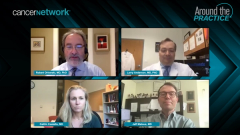
Transplant-Ineligible MM: Treating to Progression
The rationale behind treating patients with newly diagnosed transplant-ineligible multiple myeloma (MM) until disease progression rather than stopping therapy at a designated point in time.
Episodes in this series

Robert Orlowski, MD, PhD: Let’s discuss the duration of therapy. We have another polling question here, which we’ve talked a bit about, but let’s get the audience’s opinion. What is your approach to determining duration of treatment for your multiple myeloma [MM] patients? Is it treat to progression, treat to a prespecified response, treat until the patient requests a drug holiday, treat for a predetermined fixed duration, or treat until tolerability issues arise? While we’ve got folks voting on that, let’s start with Larry, what do you think about that?
Larry Anderson, MD, PhD: Based on the MAIA and the SWOG S0777 studies, treating until progression is the key to getting that longer—not only progression-free survival [PFS], but also overall survival [OS]—advantage. Unless they’re having horrible toxicity, I would try to treat until progression.
Jeff Matous, MD: There’s an art to treating to progression. It requires a lot of clinical skills, listening to your patient, educating your patient about the toxicities they should be on the lookout for, and encouraging them to voice those. Keeping people on longer treatment is an art.
Robert Orlowski, MD, PhD: Caitlin, it looked like you had a thought about that.
Caitlin Costello, MD: Nicely said, Jeff. It is an art. If we’re going to try and extrapolate as best as we can for our transplant-ineligible population by looking at the transplant-eligible population, there’s a lot of transplant studies out there that have shown that continued treatment along the course—granted we’re adding a transplant in there, which is a huge tool—leads to continued improvement in the depth of response and remission times. As best as we can, we must extrapolate to say that more is better.
Robert Orlowski, MD, PhD: I’d like to reiterate a point that many of you have already made, which is with these transplant-ineligible patients, you don’t have as many of them going from first line to second line as, unfortunately, toxicities or complications occur. Whereas in the younger patients, you probably get more people going from first line to second line. In a setting where we still, unfortunately, lose some people before they get to second line, it’s important to go with your best guns upfront and hopefully have the best impact for the patient.
Transcript edited for clarity.
Newsletter
Stay up to date on recent advances in the multidisciplinary approach to cancer.





















































































